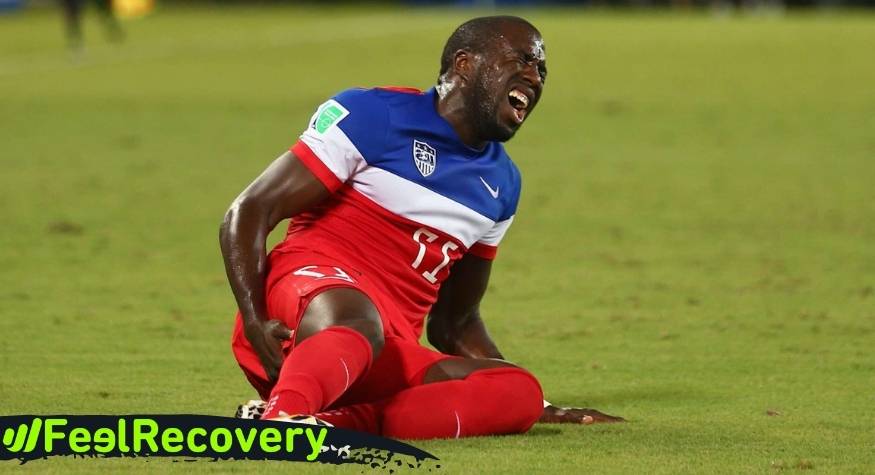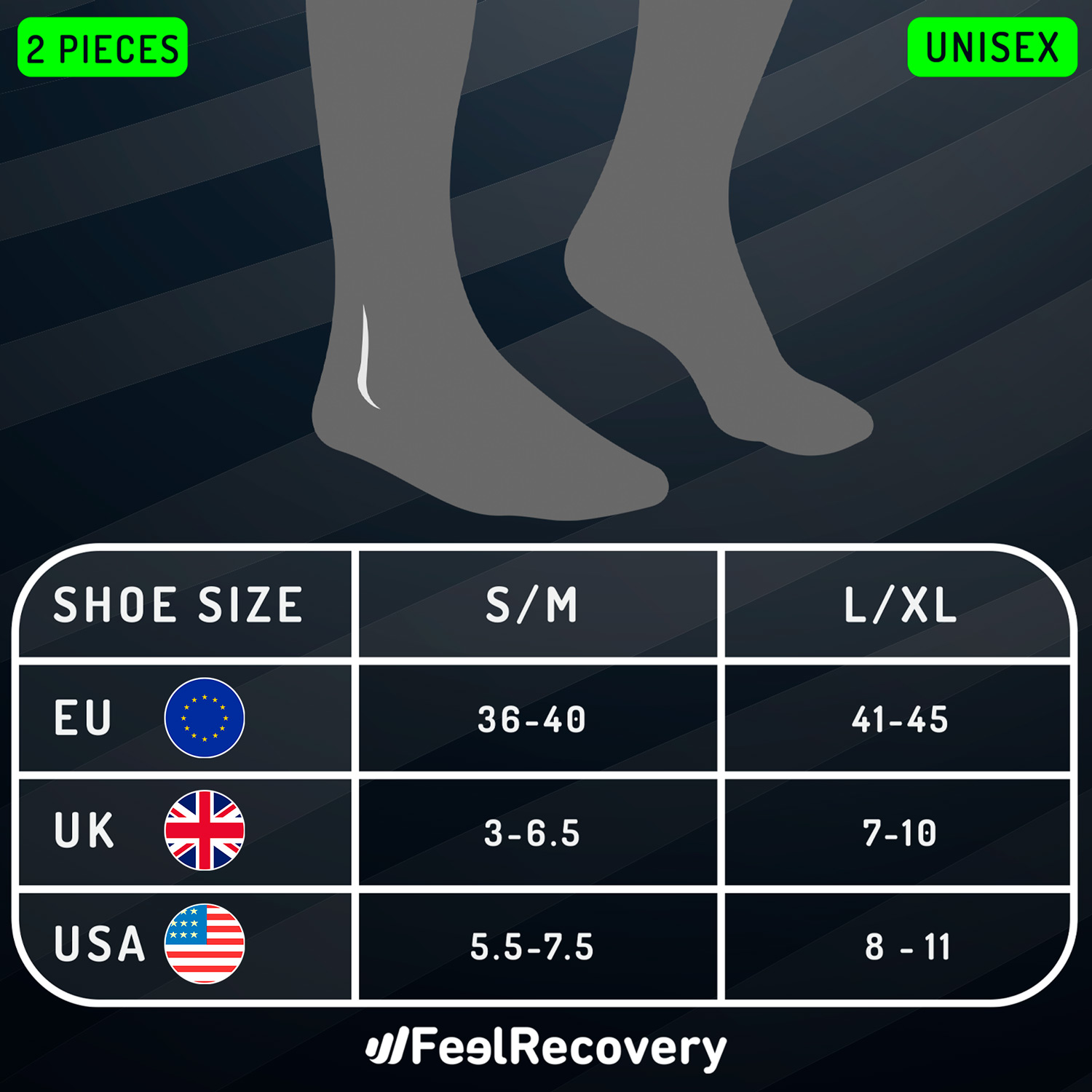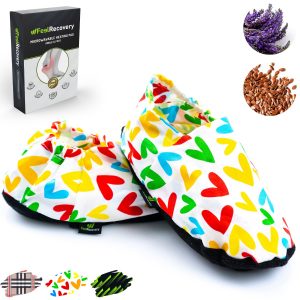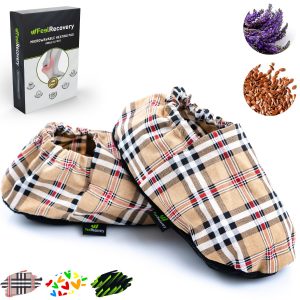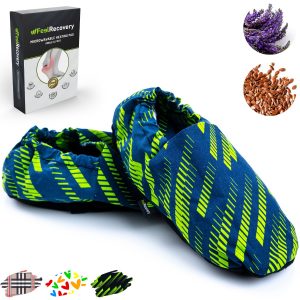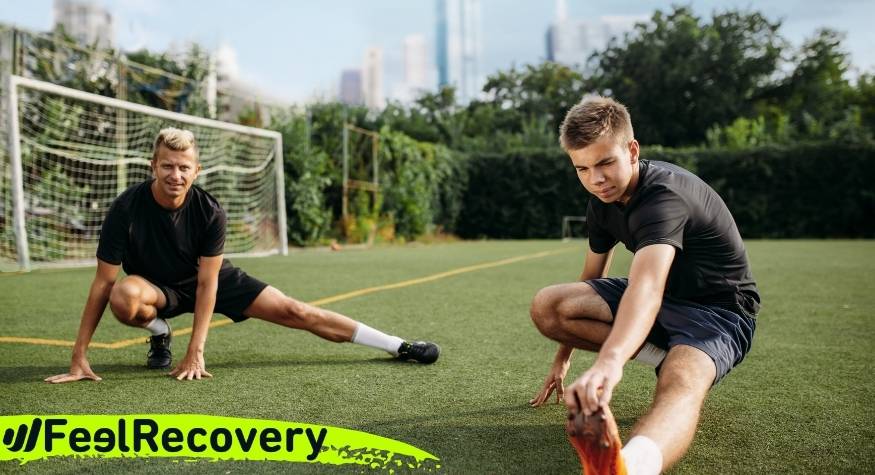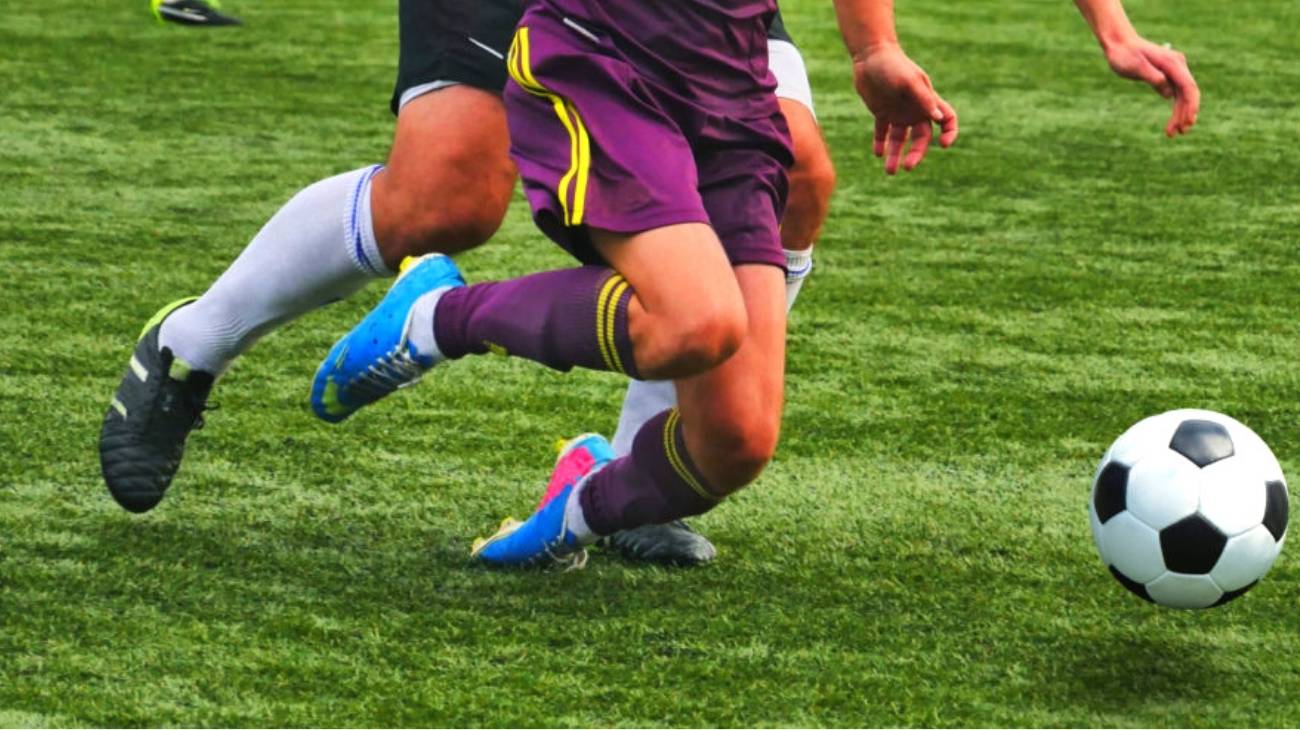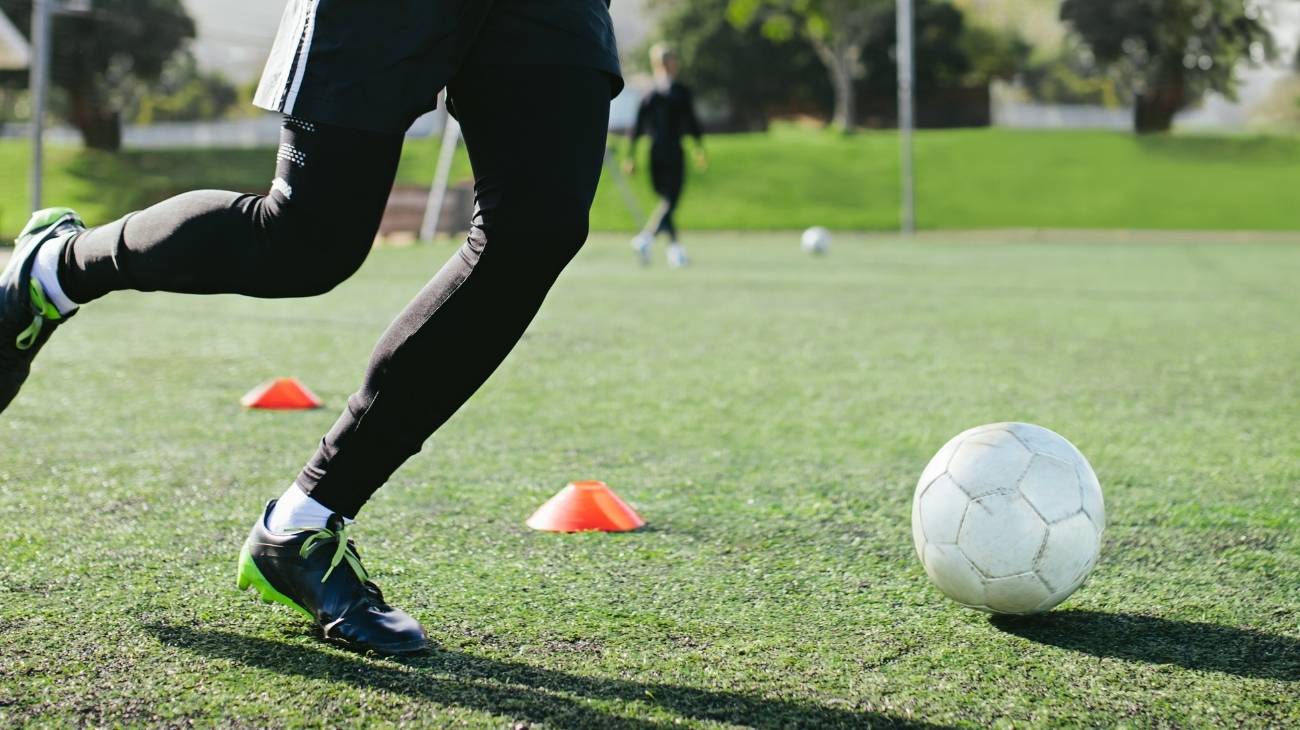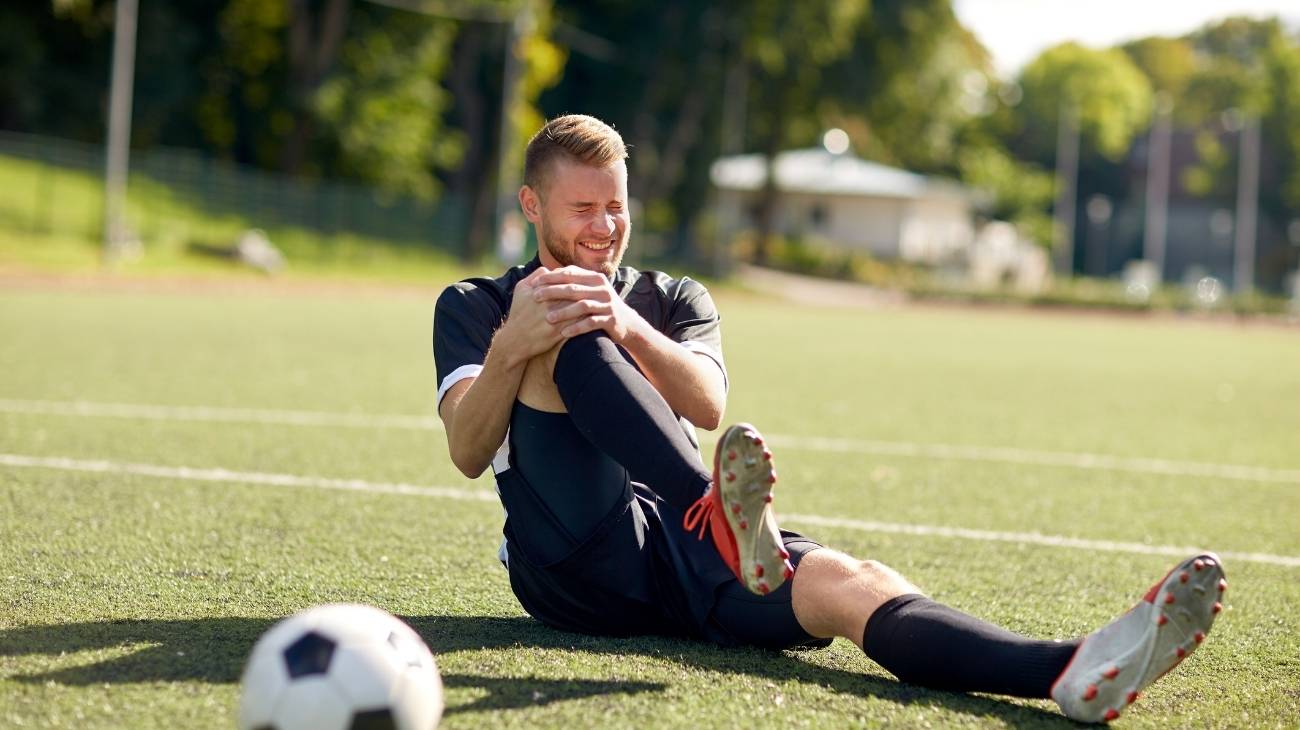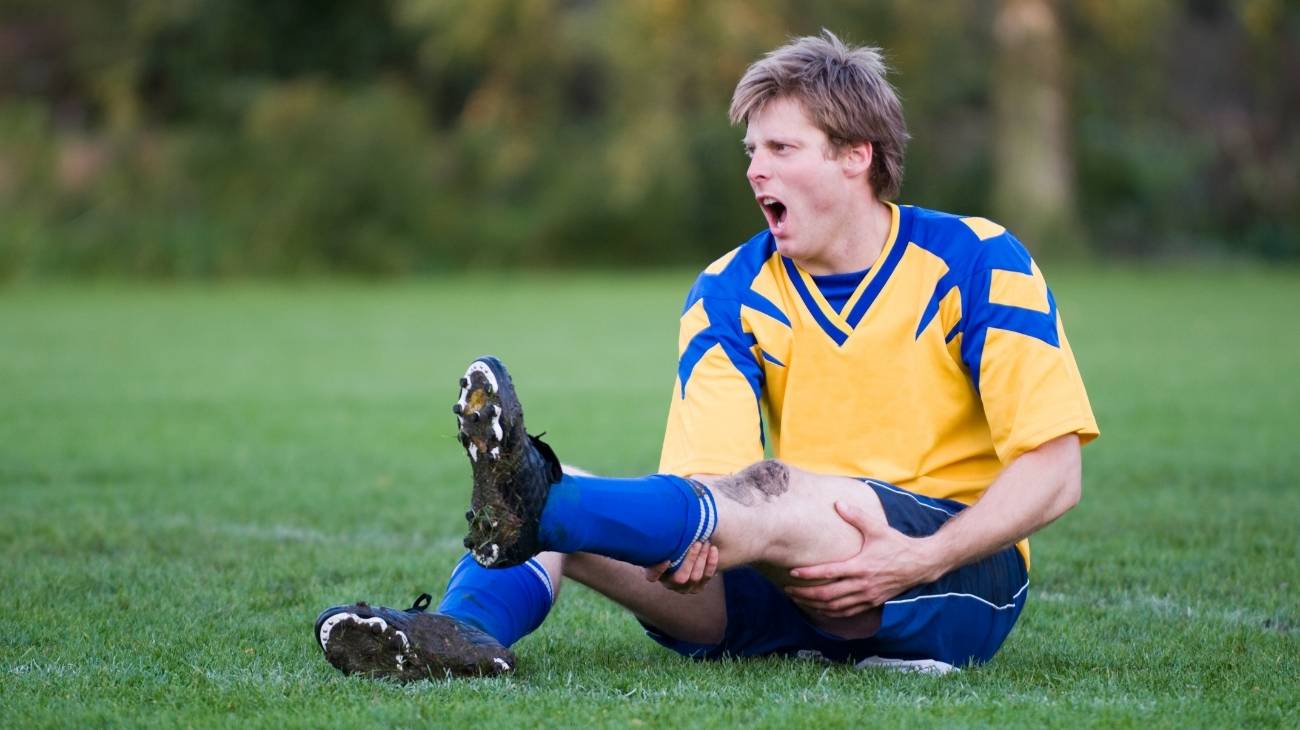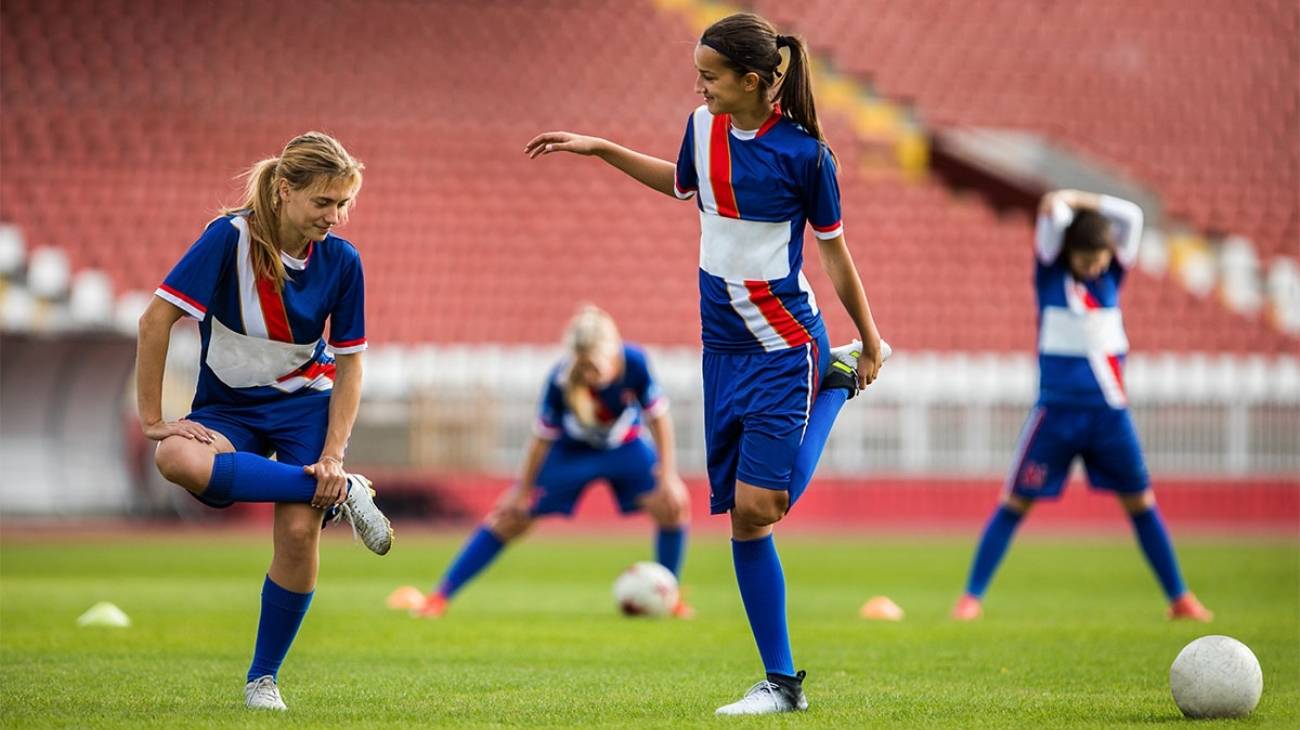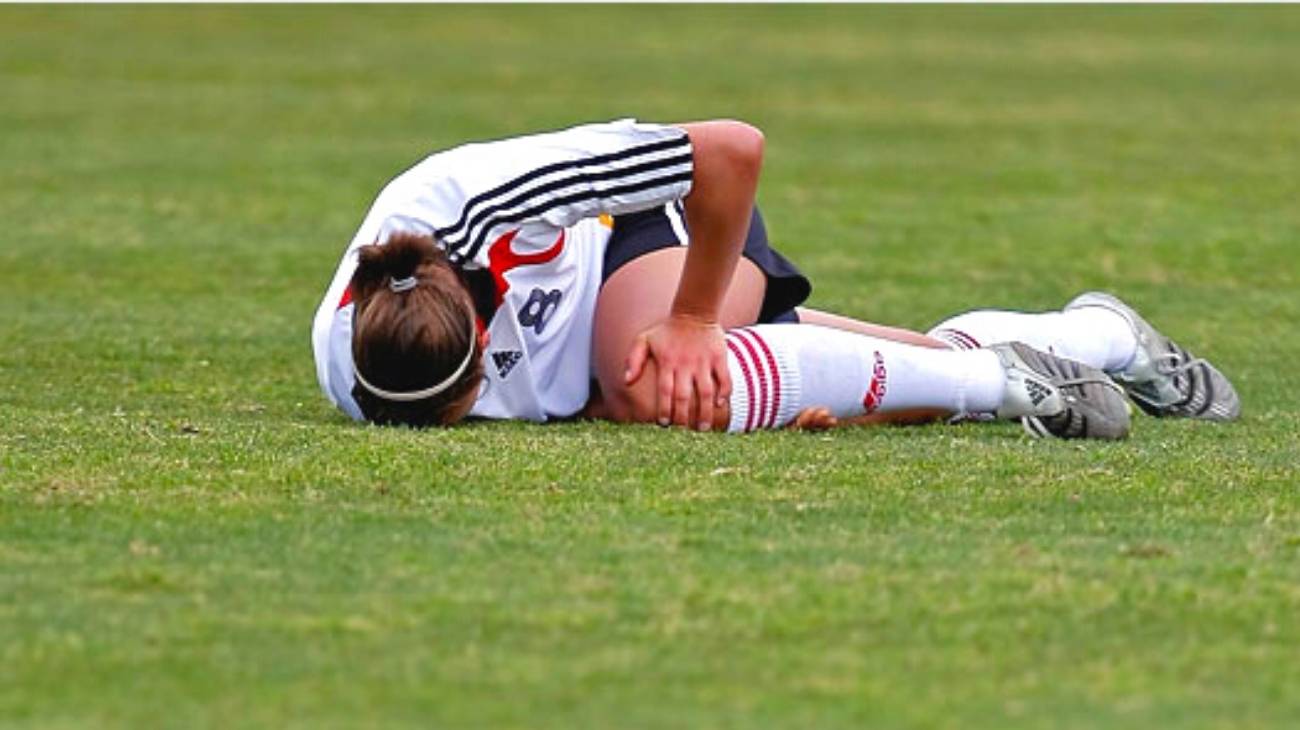No soccer player, coach, fan or club president wants to see injury casualties in the squad. Knowing how to prevent aches and pains in soccer is tantamount to more playing time on the pitch, more opportunity to perform at your best and to be recognised.
To help you reduce the risk of soccer injuries, we show you the most effective prevention methods and the most common ailments in soccer, (Soccer) as the sport is also known. Learn everything you need to know about keeping up your game in this article.
What are the most common types of injuries when playing soccer?
Any moderate or chronic injury requires players to be stretchered off the pitch, a luxury not everyone can afford. More than 50% of soccer injuries occur in the lower body, i.e. the legs.
Check out this list of the most common injuries to avoid:
- Muscle strains: After an intense match, the muscle is unable to return to its resting state and remains tense, which causes a lot of pain for the player. It is a harmless injury that often occurs even during competition, especially in those who are forced to be active for too long, but with a little stretching and good hydration it can be continued. It usually occurs in the biceps femoris, quadriceps or calves...
- Fractured tibia: Imagine a hard sweep from your opponent against your leg. This direct blow fractures the tibia, even though the player has a shin guard. Fibula fractures are also common. Both are injuries that take months to heal. A fracture can be partial or total, in both cases it requires immobilisation of the leg and physiotherapy before attempting to warm up again.
- Hamstring tears: Stretching and overexertion from intense matches are the main reasons for hamstring muscle tears. Of this muscle group, the one that is most affected is the biceps femoris, due to its power and the traction it provides players with when they start their runs. There are three degrees of rupture, the last being a complete tear that requires surgery.
- Sprained ankle: Sudden changes of direction when running or a hard tackle from an opponent cause this condition, which is quite common in soccer. The external lateral ligaments are the most vulnerable to tearing. The main symptom is bruising of the skin, which indicates internal bleeding. The foot becomes stiffer with severe pain when trying to walk.
- Knee sprain: These sprains are caused when the knee is broken while the foot is stuck in the grass or by a strong entry that generates a fall in which all the weight of the body falls on the joint. In some cases it is probably a partial tear of some muscle fibres, in other cases a third of the tissues are torn, and in the worst cases the entire ligament is injured.
- Meniscal tears: Their role in the knee is to eliminate damaging friction in the joint. As both menisci are supposed to act as shock absorbers, they take a lot of damage from the demands of soccer. During a player's twist, they are likely to become inflamed, and even intense trauma can injure them. A good warm-up, one of the prevention techniques you will learn, will be essential to avoid meniscus injuries.
- Ruptured anterior cruciate ligament: A sprained knee or a strong tackle by an opponent to steal the ball can injure this ligament, which is essential for the correct functioning of the joint. The clearest symptom is a loud creaking noise that indicates that the tissue has completely ruptured, and an extremely sharp pain that will require the player to leave the field with the support of his teammates or even on a stretcher.
Best products for soccer injury recovery
Bestseller
-
2 Ankle Compression Sleeve (Black/Gray)
$19.95 -
2 Ankle Compression Sleeve (Green/Navy)
$19.95 -
2 Ankle Compression Sleeve (Pink/Bordeaux)
$19.95 -
2 Calf Compression Sleeve (Black/Gray)
$19.95 -
2 Calf Compression Sleeve (Green/Navy)
$19.95 -
2 Calf Compression Sleeve (Pink/Bordeaux)
$19.95 -
2 Knee Compression Sleeve (Black/Gray)
$19.95 -
2 Knee Compression Sleeve (Green/Navy)
$19.95 -
2 Knee Compression Sleeve (Pink/Bordeaux)
$19.95 -
2 Patella Knee Strap (Black/Gray)
$14.95 -
2 Patella Knee Strap (Green/Navy)
$14.95 -
2 Patella Knee Strap (Pink/Bordeaux)
$14.95 -
2 Thigh Compression Sleeve (Black/Gray)
$19.95 -
2 Thigh Compression Sleeve (Green/Navy)
$19.95 -
2 Thigh Compression Sleeve (Pink/Bordeaux)
$19.95 -
Acupressure Mat and Pillow (Black/Gray)
$49.95 -
Acupressure Mat and Pillow (Green/Navy)
$49.95 -
Acupressure Mat and Pillow (Pink/Bordeaux)
$49.95 -
Acupressure Pillow (Black/Gray)
$29.46 -
Acupressure Pillow (Green/Navy)
$29.46 -
Acupressure Pillow (Pink/Bordeaux)
$29.46 -
Foot Massage Roller for Plantar Fasciitis (Black)
$19.95 -
Foot Massage Roller for Plantar Fasciitis (Green)
$19.95 -
Foot Massage Roller for Plantar Fasciitis (Pink)
$19.95 -
High Density Foam Roller for Muscle (Black/Gray)
$29.95 -
High Density Foam Roller for Muscle (Green/Navy)
$29.95 -
High Density Foam Roller for Muscle (Pink/Bordeaux)
$29.95 -
Ice Massage Roller Ball (Black)
$39.95 -
Ice Massage Roller Ball (Green)
$39.95 -
Ice Massage Roller Ball (Pink)
$39.95 -
Ice Pack for Foot - Cold Therapy Socks (Black)
$24.95 -
Ice Pack for Foot - Cold Therapy Socks (Green)
$24.95 -
Ice Pack for Foot - Cold Therapy Socks (Pink)
$24.95 -
Microwavable Heated Slippers (Hearts)
$24.95 -
Microwavable Heated Slippers (Oxford)
$24.95 -
Microwavable Heated Slippers (Sport)
$24.95 -
Pack 2 In 1 Foam Roller High + Soft Density (Black/Gray)
$29.95 -
Pack 2 In 1 Foam Roller High + Soft Density (Green/Navy)
$29.95 -
Pack 2 In 1 Foam Roller High + Soft Density (Pink/Bordeaux)
$29.95 -
Sacroiliac Support Belt (Black)
$24.95 -
Sacroiliac Support Belt (Green)
$24.95 -
Sacroiliac Support Belt (Pink)
$24.95 -
Soft Density Foam Roller for Recovery (Black)
$29.95 -
Soft Density Foam Roller for Recovery (Green)
$29.95 -
Soft Density Foam Roller for Recovery (Pink)
$29.95 -
Sport Compression Socks (1 Pair) (Black/Gray)
$19.95 -
Sport Compression Socks (1 Pair) (Green/Navy)
$19.95 -
Sport Compression Socks (1 Pair) (Pink/Bordeaux)
$19.95 -
Trigger Point Massage Stick (Black)
$14.95 -
Trigger Point Massage Stick (Green)
$14.95 -
Trigger Point Massage Stick (Pink)
$14.95
List of injury prevention methods for soccer players
Increasing endurance and strength will always be key factors when it comes to preventing injuries that force you to be out of action. As we want you to be the best player ever, check out this list of soccer injury prevention methods.
Warm up properly
Warming up in soccer is a must, because in a match the legs and mid-body will be subjected to a lot of stress and physical strain. This is why you should condition your body both before training and before a match for at least 30 minutes.
In soccer it is important to start with a gentle walk and then a jog with obstacles, even touching the ground with your hands every few minutes. The purpose is to gradually accustom the body to a more intense sporting activity. The metabolism is activated and adapts to the new demands.
End training sessions with a cool-down
After an intense competition or training match, the muscles will be very tense, so a cool-down session is necessary to bring them back to their natural state, as well as our entire cardiac and respiratory system. Thanks to this we will be able to release endorphins that counteract all the stress generated during training.
It only takes a few minutes for the body to regulate breathing, blood pressure and heart rate. Aerobic and final stretching exercises can be performed, as well as continuing to walk around the pitch for a while before going into a complete state of rest and returning to calm.
Good nutrition and hydration
Nowadays, nutrition is a very important factor and even more so if you play high intensity sports like soccer. A soccer player should eat at least 2200-2500 calories a day from healthy sources. The consumption of micronutrients such as minerals and vitamins will be essential both to keep us lucid during the effort we are going to make, as well as to keep our muscles healthy and strong to avoid injuries.
The best thing to do is to consult a specialist doctor or nutritionist so that, according to your calorie needs and specific aspects, he or she can recommend a suitable and individualised diet to ensure maximum physical and mental performance when you practice sport.
As for hydration, do not wait until you feel thirsty, as this is a sign of dehydration, but drink every 20-25 minutes in small sips to keep hydrated throughout the match or training. A practice that became very popular because it was used by Real Madrid CF, is to weigh yourself before and after a match, and drink water equivalent to the amount of grams you lose in sweat. In this way the muscles will always be hydrated, a practice that works for both professionals and amateurs.
Improve your physical condition
It is the responsibility of the soccer player to be in constant preparatory training, you should not spend a week without training, as the muscles adapt quickly to a sedentary lifestyle. A soccer players body should be slim and toned, the least expected is excess fat that makes it heavy and sluggish.
To withstand 90 minutes of a match you will need to have excellent aerobic endurance, but you should not neglect the muscular work to perform the various sprints and changes of pace, as at a certain point you may develop cramps due to overexertion or weaknesses that can lead to muscle and ligament injuries.
Sports massage
A good massage prepares the muscles to remain active and in optimal condition. The aim is not to relax the body, but to address muscular problems and a quick recovery. Massages have the function of draining muscular energy (tension) nested in a specific area of the body due to hard and intense workouts.
The most commonly used massage techniques in sport are kneading, stretching and percussion, and while you can do this yourself, it is always advisable to have it done by a physiotherapist as this results in a better release of endorphins and therefore better muscle recovery.
Use of hot and cold therapies
Cold and heat will be your best allies both to prevent injuries and to treat them in first aid. Cold is used especially in the second case, as it reduces inflammation after suffering a sprain or trauma during a match.
Heat can be used to relax the muscles as it promotes blood circulation due to its vasodilator effect, which allows more blood to reach them and at the same time allows them to better absorb all the nutrients from a good diet.
Use of compression garments
Compression socks and trousers are the most commonly used garments in soccer. They work perfectly to keep the muscle at a regulated temperature and increase its performance, as well as to reduce the impact generated during running.
It is also common to see players wearing compression sleeves in amateur matches, or compression shirts. All of these have the same effect no matter what part of the body they are worn on, but always make sure they are made of a material that is not overly compressive, and that the fabric is breathable.
Use of acupressure therapy
It is a holistic and alternative therapy based on "Chi". With acupressure, the energy accumulated in key points that cause pain and discomfort in players is channelled. It does not use needles like acupuncture, but instead uses the fingers and soles of the hands of the physiotherapist, so that the accumulated tension at these points is released.
To know these points it is necessary to study them in detail, not only to know where they are, but also to know precisely how to stimulate them, so it is something you should always leave in the hands of a professional.
Use of thermotherapy and cryotherapy
This is the use of heat and cold on the body, but at extreme temperatures, to treat long-term chronic injuries. It is no longer referred to as first aid, but rather as specific recovery therapies for each ailment of the body, although they are also common for the prevention of injuries. It is also known as contrast therapy.
In soccer, cryotherapy is often used to strengthen the players' muscles, and especially to prevent muscle aches and pains that always appear the next day after an intense match. Whereas thermotherapy is more commonly used for its relaxing and vasodilator effect that allows blood to circulate better in the muscle tissues, which can also aid recovery after a serious injury.
Use of good equipment
First of all, the ball should be taken into account; playing with a ball that is from a different sport can cause serious problems and considerably increases the chances of injury. As for clothing, you should wear shirts and shorts that are not only comfortable, but that do not accumulate a lot of sweat as this will make them heavier, look for breathable clothing.
Protection such as shin guards should also be worn for the legs, as this is one of the most trauma-prone areas in soccer, otherwise a strong tackle from an opponent can cause serious damage to the integrity of the athlete.
References
- Inklaar, H. (1994). Soccer injuries: I: incidence and severity. Sports medicine, 18, 55-73. https://link.springer.com/article/10.2165/00007256-199418010-00006
- Inklaar, H. (1994). Soccer Injuries: II: Aetiology and Prevention. Sports medicine, 18, 81-93. https://link.springer.com/article/10.2165/00007256-199418020-00002
- Ekstrand, J., & Gillquist, J. (1983). Soccer injuries and their mechanisms: a prospective study. Medicine and science in sports and exercise, 15(3), 267-270. https://europepmc.org/article/med/6621313
- Dvorak, J., & Junge, A. (2000). Football injuries and physical symptoms. The American journal of sports medicine, 28(5_suppl), 3-9. https://pubmed.ncbi.nlm.nih.gov/11032101/
- Faude, O., Rößler, R., & Junge, A. (2013). Football injuries in children and adolescent players: are there clues for prevention?. Sports medicine, 43, 819-837. https://link.springer.com/article/10.1007/s40279-013-0061-x
- Arnason, A., Sigurdsson, S. B., Gudmundsson, A., Holme, I., Engebretsen, L., & Bahr, R. (2004). Risk factors for injuries in football. The American journal of sports medicine, 32(1_suppl), 5-16. https://journals.sagepub.com/doi/abs/10.1177/0363546503258912
- Östenberg, A., & Roos, H. (2000). Injury risk factors in female European football. A prospective study of 123 players during one season. Scandinavian journal of medicine & science in sports, 10(5), 279-285. https://onlinelibrary.wiley.com/doi/abs/10.1034/j.1600-0838.2000.010005279.x
- Ekstrand, J., Hägglund, M., & Waldén, M. (2011). Epidemiology of muscle injuries in professional football (soccer). The American journal of sports medicine, 39(6), 1226-1232. https://journals.sagepub.com/doi/abs/10.1177/0363546510395879
- Hallén, A., & Ekstrand, J. (2014). Return to play following muscle injuries in professional footballers. Journal of sports sciences, 32(13), 1229-1236. https://www.tandfonline.com/doi/abs/10.1080/02640414.2014.905695
- Hespel, P., Maughan, R. J., & Greenhaff, P. L. (2006). Dietary supplements for football. Journal of Sports Sciences, 24(07), 749-761. https://www.tandfonline.com/doi/abs/10.1080/02640410500482974

